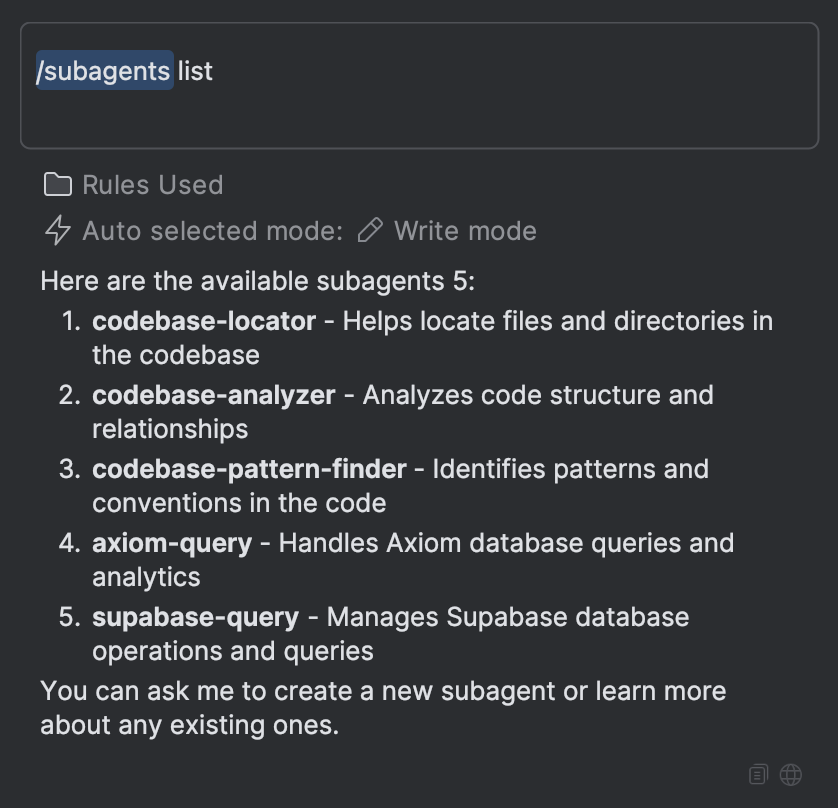Subagents require Multi mode to be selected. Use
Cmd/Ctrl . to toggle between modes.What are subagents?
Subagents are pre-configured AI personalities that Firebender can delsayegate tasks to. Each subagent:- Has a specific purpose and expertise area
- Uses its own context window separate from the main conversation
- Can be configured with specific tools it’s allowed to use
- Includes a custom system prompt that guides its behavior
Creating subagents
You can use the/subagents slash command to list existing subagents and create new ones:

File format
Each subagent is defined in a Markdown file with this structure:Configuration fields
| Field | Required | Description |
|---|---|---|
| name | Yes | Unique identifier using lowercase letters and hyphens |
| description | Yes | Natural language description of the subagent’s purpose |
| tools | No | Comma-separated list of specific tools. If omitted, inherits all tools from the main thread |
| model | No | Model to use for this subagent. Can be a model alias (sonnet, opus, haiku). If omitted, defaults to the configured subagent model |
Available tools
You can configure subagents with any of the following tools:read_file- Read files from the codebaselist_dir- List directory contentsgrep_search- Search file contents with regex patternsfile_search- Fuzzy search for files by pathdelete_file- Delete filesrun_terminal_cmd- Execute terminal commandsweb_search- Search the web for informationedit_file- Edit files in the codebase
Configuration
Subagents are configured in yourfirebender.json file using the subagents array:
- Relative paths:
.firebender/subagents/my-subagent.md(relative to project root for project config,~/.firebenderfor personal config) - Home directory:
~/my-subagents/subagent.md - Absolute paths:
/path/to/subagent.md
firebender.json, subagents are available in the current project. When configured in personal ~/.firebender/firebender.json, they’re available across all projects.
Related documentation
- Agent - Learn about Firebender’s agent modes
- Subagent Configs Cookbook - Real-world examples of subagent configurations
- Commands - Custom AI commands for your exact workflow
- MCP - Extend Firebender with Model Context Protocol
